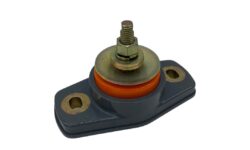All You Need to Know About Motorized Ball Valves: Functions, Types, and Applications
What is a Motorized Ball Valve and How Does it Work?
Motorized ball valves are devices use for regulating the flow of liquids and gases in industrial and residential applications. They consist of a ball-shaped valve with a hole in the middle that rotates 90 degrees to either open or close the flow. The motorized component of the valve consists of an electric actuator that moves the ball inside the valve, controlling the flow.
The electric actuator can be either AC or DC power and can control by a switch or a computer program. The valve body is typically made of brass, stainless steel, or PVC, depending on the application. The Motorized ball valve comes in different sizes, ranging from 1/4 inch to 6 inches in diameter.
Types of Motorized Ball Valves
There are different types of motorized ball valves available in the market, each designed for a specific application. Here are some common types:
Two-way motorized ball valves – These valves have two ports, an inlet, and an outlet, and are used for on/off control of the flow.
Three-way motorized ball valves – These valves have three ports and are used to divert flow from one inlet to two different outlets or vice versa.
Full port motorized ball valves – These valves have a larger ball that opens wider, allowing for higher flow rates.
Reduced port motorized ball valves – These valves have a smaller ball that restricts the flow, making them suitable for applications that require precise control.
Applications of Motorized Ball Valves
Various applications across numerous sectors use motorized ball valves. Some common applications include:
Heating, ventilation, and air conditioning (HVAC) systems – Motorized ball valves are used to control the flow of water and air in HVAC systems, ensuring that the temperature and air quality are maintained.
Water treatment plants – Motorized ball valves are used to regulate the flow of water in treatment plants, ensuring that the water is treated properly.
Oil and gas industry – Motorized ball valves are used in oil and gas pipelines to control the flow of crude oil and natural gas.
Food and beverage industry – Motorized ball valves are used to control the flow of liquids in food and beverage production processes, ensuring that quality and hygiene standards are maintained.
Advantages and Disadvantages of Motorized Ball Valves
Like any other device, motorized ball valves have their advantages and disadvantages. Here are some of them:
Advantages:
- Energy-efficient – Motorized ball valves consume less power than other types of valves, making them more energy-efficient.
- Fast and accurate control – Motorized ball valves can quickly and accurately control the flow of liquids and gases, making them suitable for applications that require precise control.
- Low maintenance – Motorized ball valves require minimal maintenance, making them cost-effective in the long run.
- Wide range of sizes and materials – Motorized ball valves come in various sizes and materials, making them suitable for different applications.
Disadvantages:
- Limited temperature and pressure range – Motorized ball valves have a limited temperature and pressure range, making them unsuitable for high-temperature and high-pressure applications.
- Higher initial cost – Motorized ball valves are more expensive than other types of valves, making them less cost-effective in the short term.
- Limited flow capacity – Motorized ball valves have a limited flow capacity, making them unsuitable for high-flow applications.
Conclusion:
Motorized ball valves are versatile devices that offer precise control over the flow and are widely use in various industrial and residential applications. They are available in different types and sizes, making them suitable for a wide range of applications. They offer several advantages such as energy efficiency, fast and accurate control, low maintenance, and a wide range of materials and sizes.
However, motorized ball valves also have some disadvantages, such as a limited temperature and pressure range, higher initial cost, and limited flow capacity. It is important to consider these factors when choosing a motorized ball valve for a particular application.
Overall, motorized ball valves are reliable and efficient devices that can help optimize processes and improve productivity in various industries. With proper selection and installation, they can provide long-term benefits and cost savings.



